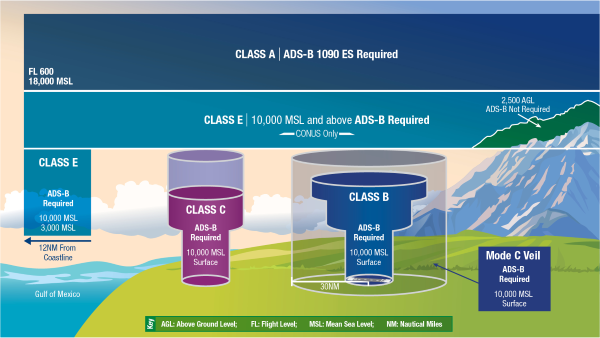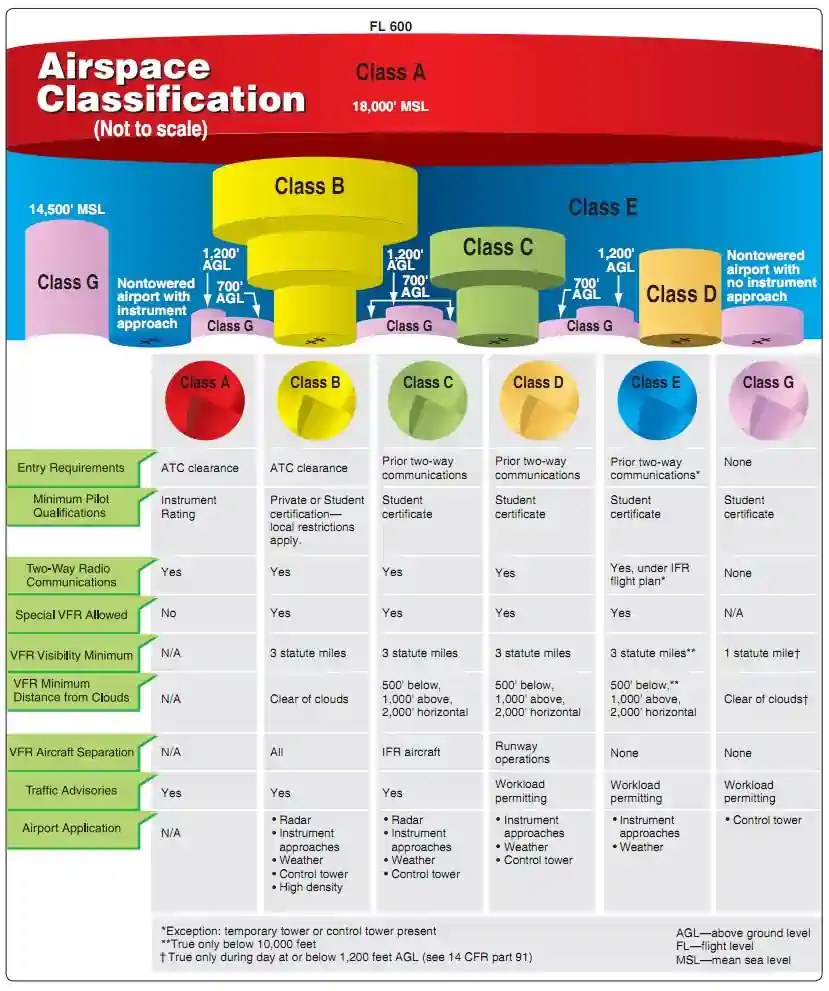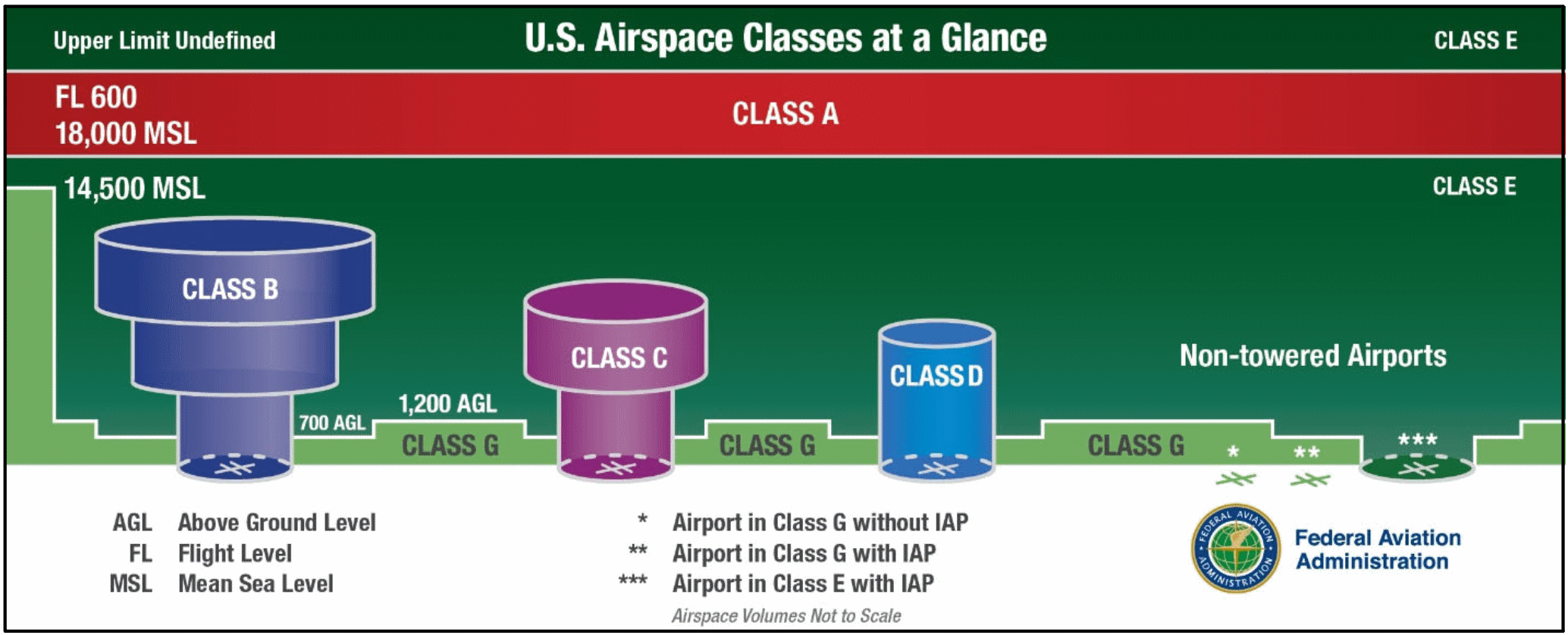Different Classes of Airspace Explained in the Us
Class C airspace is considerably smaller than Class B airspace and Air Traffic Control does not provide the same level of separation service as you would find in Class B airspace. 6 rows Unless designated at a lower altitude Class E airspace begins at 14500 MSL over the United.
Airspace Classes Explained Bobbie Lind
Class C Crowded is just like class B but smaller.

. This class of airspace. Permission Clearance is needed to enter this airspace and ATC instructions must be strictly adhered to. Spanish students discussed the classes of the International Civil Aviation Organization ICAO airspace.
Class E airspace starts at various altitudes but always exists above 14500 feet. The United States airspace systems classification scheme is intended to maximize pilot flexibility within acceptable levels of risk appropriate to the type of operation and traffic density within that class of airspace in particular to provide separation and active control in areas of dense or high-speed flight operations. A B C D and E airspace.
Thanks to Pondlife for the FAA document and for checking the AOPA magazine article. Airspace was always a lofty topic. All aircraft in class C airspace are required to engage in radio communication with the air traffic control before entering the airspace and while they are within the airspace.
All three are now under Class E. Class G is considered uncontrolled. This area extends from 18000 feet mean sea level MSL up to flight level 600 and out to 12 nautical miles from the contiguous United States.
Airspace classes are divided into three main categories Controlled Uncontrolled and Special UseOther. There are six classes of controlled airspace from Class A to Class E arranged in decreasing order of the degree of ATC regulation. Sounds confusing - right.
They explained that Classes A to E are controlled airspace and Class F and G are uncontrolled. Overview of Airspace. An airspace of defined dimensions within which ATC service is provided to IFR flights and to VFR flights in accordance with the airspace classification.
Also via here we find. Uncontrolled airspace is airspace where no ATC regulation service is provided or required mostly due to practical reasons. This extends from 18000 up to 60000 MSL above mean sea level.
1 week ago Jul 14 2016 On a map Class Gs ceiling is the floor of Class E airspaceAnd its always exclusive. The preceding document is here but unhelpful. Class Bravo B is the next category and can be identified with large blue circles surrounding the area on sectional charts see figure 1.
CLASS EWell come back to this later. Controlled airspace is a generic term that covers Class A Class B Class C Class D and Class E airspace areas. To give you an idea of what kind of airports fall into the B and C.
These classes of airspace are logically arranged with regard to the conditions each airman must meet to legally operate an aircraft in each airspace class. This is where air traffic control has various levels of jurisdiction. Class A Airspace The first of the airspace classes is class A.
In 1993 the United States implemented a slightly modified version of the ICAO classifications. Unless otherwise permitted two-way radio communication must be established with ATC prior to entering the airspace and then maintained while flying in Class D airspace. Controlled space is the opposite.
The airspace system in the United States is categorized by letter classifications from A through G with the omission of F which does not exist in the US. Classes A through E are all types of controlled airspace. Class B Big is that big yellow stack of cylinders.
Courses 243 View detail Preview site. Is the controlled airspace not classified as Class A B C or D airspace. The higher you are in altitude the bigger the area.
Class E airspace can also extends down to the surface or 700 feet AGL. Transition Areas Continental Control Areas and Control Areas. This Is How Class G Airspace Works - Boldmethod.
The cylinders represent different areas at different altitudes. Although it is designated as such because the sky is a little bit busier in those areas with air traffic you shouldnt be intimidated to fly and operate in this type of airspace. The uncontrolled airspace does not mean that anything goes only that an air traffic controller is not monitoring and actively routing planes through those areas.
A pilot requires clearance from ATC prior to entering Class A and B airspace and two-way ATC communications are required before flying into Class C or D airspace. A pilot on either an IFR or VFR flight needs to gain permission to enter this airspace. In the United States airspace is divided into Class A B C D E and G.
The first is Class Alpha A airspace. This is usually areas around Aerodromes and Airports. Class A Altitude is up on top at 18000 ft.
Usa aviation-history airspace icao. Class D airspace is between the surface and 2500 feet above airport elevation at airports with operational control towers. Class A B and C airspace are all controlled airspace.
Class A airspace extends from 18000 feet MSL to 60000 feet MSL or flight level 600. There are five different classes of controlled airspace. For any airspace that hasnt been.
Class A airspace is not depicted on sectional charts because it overlays all other categories. Class B Airspace This designated area starts at ground level and goes up to 100000 MSL. Most of the airspace in The United States is Class E airspace.
For example if Class E starts at 700 feet AGL Class G goes up to but doesnt include 700 feet AGLClass G airspace is most easily found on a sectional map when a. Class E airspace extends from 1200 feet AGL to 17999 feet MSL 18000 feet is the floor of Class A airspace. This is the only uncontrolled airspace in the UK.
Class C airspace covers busy airports which usually have a mix of airline and general aviation traffic Daytona Beach KDAB for instance. Class A Class B and Class C Airspace. Class A airspace requires instrument flight rules.
When Class E airspace extends down to 700 AGL the sectional shows a faded magenta line. Class F is does not exist over the United States. That brings the total to 10 out of 20.


Comments
Post a Comment